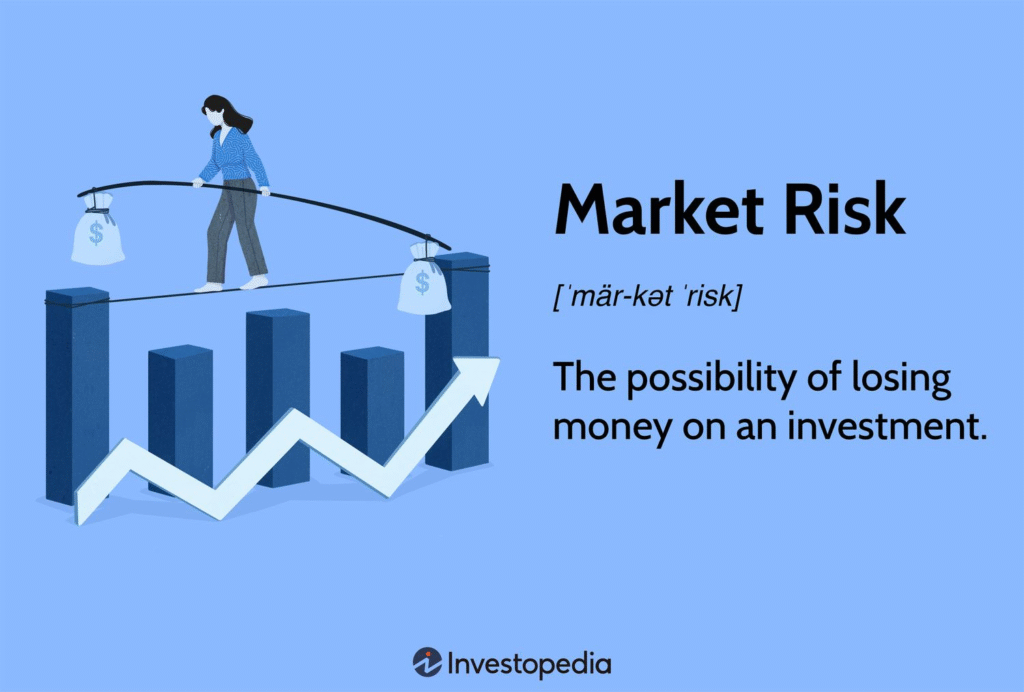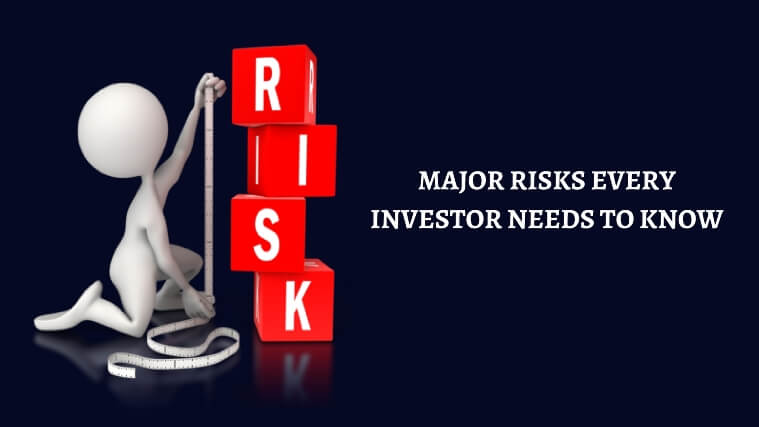Now Reading: Market Risks Exist: What Investors Must Know Before It’s Too Late 2025
-
01
Market Risks Exist: What Investors Must Know Before It’s Too Late 2025
Market Risks Exist: What Investors Must Know Before It’s Too Late 2025

Table of Contents
In the dynamic world of finance, one constant remains: market risks exist. Despite technological advancements, economic planning, and improved forecasting tools, the threat of market turbulence continues to loom large for global investors. From geopolitical tensions to policy shifts, natural disasters, and sudden corporate failures, market risks come in many forms and no one is immune.
In 2025, the global financial landscape is once again facing a cocktail of uncertainties. While returns are still possible, the risks are increasingly complex, multifaceted, and often underestimated. This report takes a closer look at the current market risk environment, what’s driving it, and how individuals and institutions can navigate through it.
Understanding the Types of Market Risks

There are several primary categories of market risks, each with unique triggers and impacts:
- Systematic Risk – This refers to the risk that affects the entire market, such as recessions, wars, inflation, or pandemics. It is non-diversifiable and impacts nearly all assets.
- Unsystematic Risk – Company-specific or industry-specific issues like a CEO scandal, product recall, or a regulatory fine.
- Interest Rate Risk – As central banks across the globe adjust interest rates to control inflation, changes in rates significantly influence bond markets, mortgage loans, and overall investment decisions.
- Currency Risk – With globalization, currency fluctuations now impact every investor dealing in international markets.
- Liquidity Risk – This arises when investors are unable to sell assets without incurring substantial losses.
- Geopolitical Risk – Global tensions, wars, sanctions, and policy changes in major economies now routinely cause market volatility.
Together, these risks form a matrix that investors must continuously evaluate and hedge against.
Current Global Factors Fueling Market Risk in 2025
The global economy is experiencing a mix of fragile recovery and bubbling uncertainties. Let’s examine the key risk factors today:
1. Geopolitical Instability
Tensions in the Middle East, economic sanctions between superpowers, and instability in energy-supplying regions are creating a ripple effect on oil prices and investor confidence. These tensions can quickly escalate and cause widespread panic in the markets.
2. Inflation and Interest Rates
Although inflation has cooled in some regions after spiking during the post-pandemic era, it remains a concern. Central banks like the U.S. Federal Reserve and the European Central Bank are walking a tightrope between controlling inflation and not stifling growth. This balancing act creates an uncertain interest rate outlook, making investors cautious.
3. AI and Tech Disruption
Technology is evolving rapidly, but with it comes risk — particularly in overvaluation of tech stocks. Startups with no clear path to profitability are still receiving funding based on hype. A correction in tech valuations could hit portfolios hard, as seen during the dot-com bubble.
4. Climate-Related Financial Risks
Extreme weather events are no longer rare. From floods in Europe to droughts in Africa, the economic toll is rising. Insurance companies, agriculture businesses, and energy sectors are vulnerable. For investors, this risk is both environmental and financial.
5. Debt Accumulation
Countries and corporations have accumulated record levels of debt post-COVID-19. If interest rates rise further or economic growth slows, the ability to service debt could be impaired, leading to defaults and potential systemic risk.
How Can Investors Manage Market Risks?
While risks cannot be eliminated entirely, strategies exist to manage and mitigate them:
1. Diversification
One of the most common and effective tools, diversification spreads investments across asset classes and geographies. A properly diversified portfolio is less likely to suffer major losses from a single event.
2. Hedging
Using financial instruments like options, futures, or commodities can help protect against downside risk. For example, gold has historically acted as a hedge against inflation and market downturns.
3. Regular Risk Assessments
Markets evolve quickly. Investors need to continually review their portfolios and align them with changing conditions. Quarterly reviews and adjustments based on risk appetite and horizon are critical.
4. Focus on Quality Assets
During uncertain times, high-quality stocks — companies with strong balance sheets, consistent earnings, and low debt — tend to perform better. These offer stability in volatile markets.
5. Stay Informed
Keeping up with macroeconomic news, central bank decisions, and global developments can help investors stay ahead of potential risks. Ignorance is not bliss in financial markets.
The Role of Technology and AI in Risk Management
Advanced data analytics, machine learning models, and real-time dashboards are now helping asset managers and retail investors detect potential risks early. Algorithmic trading platforms assess millions of data points to suggest low-risk asset combinations. However, overreliance on automated systems without human judgment can also lead to unforeseen failures, as seen in past flash crashes.
What Experts Are Saying

Several financial experts warn that the current calm in markets may be misleading. According to George Lin, Chief Investment Officer at a major global bank, “We are in a low-volatility period, but beneath the surface, imbalances are building. Investors should be cautious, not complacent.”
Similarly, Jane Liu, an economist based in Singapore, notes, “The accumulation of sovereign debt and continued global instability means that a correction isn’t a matter of if, but when.”
Final Thoughts
Markets offer opportunity, but they also carry inherent risk a fact that never changes. In 2025, the risks are both old and new: traditional economic challenges, combined with rapidly evolving threats from technology and climate change. The key to long-term success lies in preparation, education, and diversification.
Market risks exist, and pretending otherwise could be costly. Whether you’re a beginner or a seasoned investor, now is the time to revisit your risk strategy, question your portfolio’s resilience, and prepare for a future where volatility may be the new normal.
Read More:- Shobha Realty Launches Its Most Luxurious Project Yet—Full Details Inside 2025





















